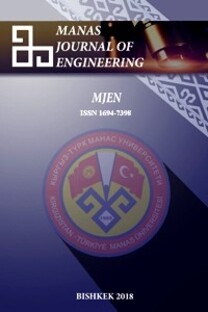A Classification of Single Influential Observation Statistics in Regression Analysis
A Classification of Single Influential Observation Statistics in Regression Analysis
___
- SHAPIRO, S.S., WILK, M.B. (1965) An Analysis of Variance Test for Normality. Biometrika, 52, 591-611.
- WONNACOTT, T. H., WONNACOTT, R. J. (1981) Regression: A second Course in Statistics. Wiley. New York.
- DRAPER, N. R., SMITH, H. (1981) Applied Regression Analysis. John Willey and Sons, Inc. New York.
- BELSLEY, D.A., KUH,E., WELSCH,R.E. (1980) Regression Diagnostics: Identifying Influential Data and Sources of Colinearity. Wiley. New York.
- CATTERJEE, S., HADI, A.S. (1986) Influential Observation, High Leverage Points, and Outliers in Linear Regression. Statistical Science, 1, 379-393.
- CATTERJEE, S., HADI, A.S. (1988) Sensitivity Analysis in Linear Regression. John Willey and Sons Inc. Canada.
- MELOUN, M., MILITKY, J. (2001) Detection of Influential Points in OLS Regression Model Building. Analytica Chimica Acta, 439, 169-191.
- ATKINSON, A.C. (1981) Two Graphical Displays for Outlying and Influential Observations in Regression. Biometrika, 13-20.
- MYERS, R.H. (1990) Classical and Modern Regression with Applications.Duxbury. New York.
- HOAGLIN, D.C., WELSCH, R.E. (1978) The Hat Matrix in Regression and ANOVA. The American Statistician, 32, 17-22.
- VELLEMANN, P.F., WELSCH, R.E. (1981) Efficient Computing of Regression Diagnostics. The American Statistician, 35, 234-242.
- FARBER, O., KADMON, R. (2003) Assessment of Alternative Approaches for Bioclimatic Modeling with Special Emphasis on the Mahalanobis Distance. Ecological Modelling, 160, 115-130
- FERNANDEZ Pierna, J. A., WAHL, F., de Noord, O. E., MASSART, D. L. (2002) Methods for Outlier Detection in Prediction. Chemometrics and Intelligent Laboratory Systems, 63, 27-39.
- COOK R.D. (1977) Detecting of Influential Observations in Linear Regression Technometrics, 19, 15-18.
- MсDONALD, B. (2002) A teaching Note on Cook’s Distance-A Guideline. Res.Lett. Inf. Math. Sci., 3, 127-128.
- MONTGOMERY D.C., PECK, E.A. (1992) Introduction to Linear Regression Analysis. John Willey and Sons, Inc. Canada.
- COOK, R.D., WEISBERG, S. (1982) Residuals and Influence in Regression. Chapmann and Hall. London.
- WELSCH, R.E. (1982) Influence Functions and Regression Diagnostics in Modern Data Analysis (R.L. Launer and A.F. Siegel, eds.). Academic Press. New York.
- HOAGLIN, D.C. KEMPTHORNE, P.J. (1986) Comment. Statistical Science, 1, (3), 408-412.
- COOK, R.D. (1986) Comment. Statistical Science, 1, No.3: 393-397.
- ISSN: 1694-7398
- Yayın Aralığı: 2
- Başlangıç: 2001
- Yayıncı: KIRGIZİSTAN-TÜRKİYE MANAS ÜNİVERSİTESİ
Repeated Measures Analysis and Some Experimental Design Considerations in Animal Science
Новая Конструкция Водоразборной Колонки Для Эффективного Распределения Питьевой Воды
з.к. МАЙМЕКОВ, в.а. ЩЕРЕДИН, а.в. ЩЕРЕДИН, а.н. ЛАРИН, д.а. БЕЙШЕНКУЛОВА
A Classification of Single Influential Observation Statistics in Regression Analysis
